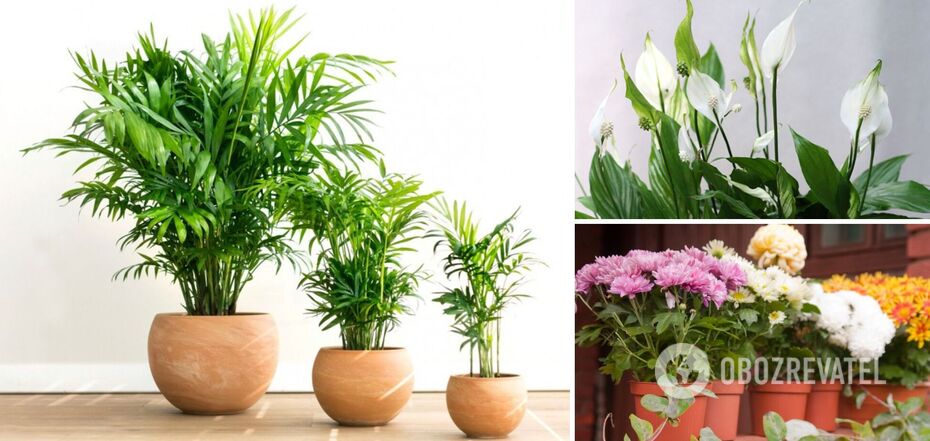Life
The best air-purifying houseplants according to NASA: they will save you even in space
Would you believe it if you were told that the American aerospace agency NASA once conducted a large-scale study of indoor plants? And yet, it's absolutely true.
The NASA Clean Air Study was conducted in 1989 and its full findings are freely available. Together with the National Association of Landscape Professionals of the United States, aerospace scientists studied how flowerpots could be used to purify the air in enclosed spaces, such as space station compartments.
It turned out that many plants that are often used for landscaping homes and offices can effectively remove volatile organic pollutants from the air. In particular, they were tested for purification from benzene, formaldehyde, ammonia, trichloroethylene, and xylenes. And while these substances can be easily removed from a room in normal concentrations by simply airing it, you may want to have a green filter at home that will be pleasing to the eye and make the atmosphere cleaner.
Four plants showed the best results in the study, coping with all types of pollutants
Spathiphyllum
A dark green bush with delicate white flowers loves bright but diffused light, humid air, and regular watering with soft, settled water. Spathiphyllums can be dwarf or giant: you can choose according to your space. They are considered to be easy-care plants.
Chamaedorea
The South American palm tree is suitable for growing even in small apartments as it looks more like a lush evergreen bush. Chamaedorea is unpretentious to lighting, but does not like cold drafts. Watering the plant depends on the air temperature: the higher it is, the more moisture you will need to add to the pot. It likes frequent spraying and warm showers.
Rapeseed
Another palm tree is among the leaders of NASA's list, this time an Asian one. Its long, bamboo-like stems have round, fan-shaped leaves. This plant is easy to grow, and it grows slowly, so it won't take over your living space. Rapeseed likes diffused sunlight, moderate watering and regular warm spraying. In addition, from time to time, the leaves of this palm tree should be dusted off to make the plant breathe easier. In general, it is suitable even for beginners.
Chrysanthemum
The study involved a garden flower, but there are species up to half a meter high that are ideal for growing indoors. Chrysanthemums need bright lighting and abundant watering, but they will be satisfied with moderately humid air. Caring for these flowerpots is not too difficult, and the plant will thank you with regular flowering. Moreover, chrysanthemums have a huge number of color options.
Five more plants were able to cope with four different pollutants
Sansevieria
This is a plant that needs almost nothing to be happy and prosperous in your home as it belongs to the caste of the most hardy plants, which feels great even with forgetful owners. It is unpretentious to lighting and even loves shade. You can even water it once a month and it will easily survive this. However, be sure to wipe the leaves from dust at least once a day.
Epipremnum
It is also known as scindapsus. A spectacular loosestrife that is also difficult to damage. It likes both bright light and shade, tolerates infrequent watering, does not require special temperature and humidity conditions, and grows very quickly. It is better to plant several stems in one pot at once to make the epipremnum look more lush and impressive.
English ivy
Another climbing plant but with a much larger leaf mass. It grows beautifully in a cascade from a hanging planter, and if you equip it with a support, it can climb up. English ivy is unpretentious to temperature and even likes coolness rather than warmth. However, it needs moist air and will be happy to be sprayed periodically. The dark green species also do quite well in the shade. Their more decorative relatives still need diffused sunlight.
Dracaena Marginata
A palm tree again. It has a beautiful sultan of elongated leaves on a woody trunk. This dracaena loves bright light in winter and partial shade in summer. It also needs infrequent but abundant watering and warm spraying because it is a plant from the tropics. It can grow quite tall, so over time, it needs to be moved to a more spacious corner.
Dracaena Fragrans
This is a shrub, although it is related to the previous palm. Unlike its relative, it is not so dependent on the brightness of the light and tolerates dry air well. The plant should be watered infrequently when the topsoil dries out by 2-3 centimeters. Under good keeping conditions, it can bloom with small white flowers with a pleasant aroma, for which it has earned its name.



























